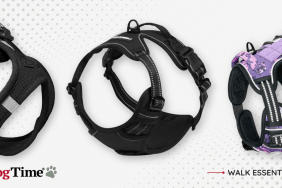
An exciting new class at Harvard University asks the one question on every dog parent’s mind: “Why do dogs do that?”
Inside a small basement room on the prestigious campus, 12 students analyze dog behavior in different situations. Why? Well, the answer is actually a little complicated.
According to a Harvard News article, the class is titled “Dogs: Behavior, Evolution, and Domestication.” And while students obviously signed up to spend time with pups, the class is also a great opportunity to explore the science of behavior.
Erin Hecht is an assistant professor of human evolutionary biology at Harvard. Besides teaching the course, Hecht also runs the Evolutionary Neuroscience Laboratory, and Harvard’s Canine Brains Project.
Studying Dogs to Understand People
Hecht says dogs are a great way for students to apply the concepts they learn in lectures. According to Hecht, “Humans are animals, too. Our behavioral adaptations have evolved in response to selection pressures just like every other species on the planet. It’s often easier for students (and scientists) to think about the evolution of behavior in other animals. In the classroom, dogs provide an accessible and familiar access point for applying an evolutionary perspective to the study of behavior.”
The class has two parts. In lecture, students read about different domestication theories, species variation, and different communication styles and abilities across breeds. According to one student, the small class size breeds engaging and interesting discussions.
But the class’s lab portion is where the real fun happens. Students run simple experiments to test and analyze how dogs react in certain situations. Many of the dogs are volunteers whose parents are also school staff and faculty.
In one curious experiment, a human confederate pretended to smash his hand with a rubber mallet, and students watched through a one-way mirror as Harper, 6-year-old Wheaten Terrier, looked over with worry. Interestingly, as the experiment continued, Harper became less and less interested, eventually only responding with a low growl and a small bark.
This is just one of the experiments students organize over the semester. Altogether, students “replicate experiences most dogs encounter in their daily lives, like meeting a new person, problem-solving, communicating with humans, and being left alone.”
Giving Students Valuable Research Experience
Hecht says that their goal is to identify associations between certain behaviors and traits in dogs. Usually, the focus is on dog-human interactions, like what happens when a dog is left alone in a room without their parent. Students record whether the dog behaves anxiously or not, and then compile that information and study the results. Eventually, students will create presentations based on their research.
As for Harper, after the experiment finishes, he left with some well-deserved treats in his belly and lots of pets. He also got an adorable red bandana, showing his participation in the Canine Brains Project.









